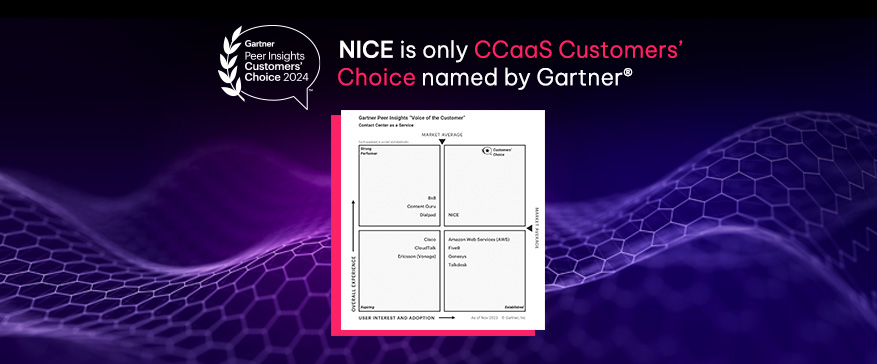What is Interactive Voice Recognition?
Interactive Voice Recognition (IVR) is an advanced technology that enables computers to understand and interpret human speech. By allowing users to interact with systems through voice commands, interactive voice response (IVR) eliminates the need for manual input such as keyboards or touchscreens. The technology leverages speech recognition to convert spoken words into text, which is then processed to carry out tasks or provide relevant information.
IVR finds applications across various industries, most notably in customer service, where it automates phone interactions by providing account information or routing calls to the correct department. Additionally, IVR is employed in voice assistants, smart speakers, and virtual call centers. While the technology is promising, challenges such as accurate speech recognition and handling complex queries persist. The future of IVR looks bright, with advancements in natural language processing and integration with artificial intelligence on the horizon.
Implementing IVR requires thoughtful planning. Best practices involve designing intuitive voice menus, providing clear instructions, and ensuring seamless integration with existing systems. Choosing the right IVR solution is crucial, considering factors like scalability, customization options, and compatibility with industry-specific requirements.
Introduction to Interactive Voice Response
Interactive Voice Recognition (IVR) is a technology that allows computer systems to recognize and interpret human speech, enabling users to interact with these systems using their voice instead of traditional input methods.
IVR systems consist of both hardware and software components that work together to process and understand spoken words. The user’s voice is captured by a microphone and converted into digital audio signals. These signals are analyzed and processed by IVR software to identify words, phrases, and commands.
Once recognized, the IVR system can execute various actions based on the user’s input, such as providing information, routing calls, executing commands, or conducting transactions. IVR systems are widely used in call centers, virtual assistants, smart speakers, and automated customer service systems. IVR systems are widely used in contact centers to improve customer interactions and efficiency.
IVR offers numerous benefits. It provides a natural and intuitive way for users to interact with systems, eliminating complex menus or navigation. It also enhances accessibility for individuals with disabilities or visual impairments.
Moreover, IVR systems improve business efficiency and reduce costs by automating tasks and offering self-service options, thereby handling a higher volume of customer interactions without additional human resources. This leads to faster response times and improved customer satisfaction. IVR systems significantly reduce the workload on customer service representatives, allowing them to focus on more complex issues that require human intervention.
In summary, Interactive Voice Recognition is a powerful technology that facilitates voice-based interaction with systems. It offers benefits such as enhanced user experience, improved accessibility, and increased business efficiency. At NICE, we specialize in developing state-of-the-art IVR solutions tailored to our clients’ unique needs.
Applications of IVR Systems
Interactive Voice Recognition (IVR) technology has transformed various industries, offering innovative solutions that enhance customer experiences and streamline business operations.
One key application of IVR is in customer service. Many companies utilize IVR systems to manage inbound calls and provide automated support. By integrating voice recognition technology into their phone systems, businesses can efficiently route calls, collect customer information, and offer self-service options, leading to improved customer service and reducing the workload on support agents.
IVR systems are also highly effective in handling high call volumes efficiently. They can resolve frequently asked questions, complete basic tasks without a live agent, and direct complex issues to appropriate human agents, thereby reducing wait times and enhancing overall productivity.
The healthcare industry also benefits from IVR. IVR systems are used to automate appointment scheduling, medication reminders, and patient monitoring. This ensures efficient communication, reduces no-shows, and enhances patient engagement.
Businesses across various sectors can leverage IVR to automate repetitive tasks such as order processing, payment collection, and account inquiries. This saves time, reduces costs, and improves overall efficiency.
Examples of IVR in action include banks using IVR systems to provide 24/7 access to account information, allowing customers to check balances, transfer funds, and report lost or stolen cards. Retailers use IVR for order tracking and returns, offering quick and convenient self-service options. Additionally, IVR technology is employed in virtual assistants like Amazon Alexa and Google Assistant, enabling voice command interactions.
By adopting Interactive Voice Recognition, businesses can enhance customer experiences, streamline operations, and improve efficiency across various industries.
Challenges and Limitations of Interactive Voice Recognition
Implementing Interactive Voice Recognition (IVR) technology comes with challenges that organizations must address to leverage it effectively.
One primary challenge is ensuring the accuracy of voice recognition. Despite significant advancements, IVR systems still struggle with certain accents, dialects, or speech patterns, leading to incorrect interpretations and frustrating user experiences. Optimizing call flow is crucial to improve user experience by simplifying navigation, reducing wait times, and providing efficient routing of inbound calls.
Privacy and security concerns are also critical. IVR systems collect and process sensitive user information, including personal and financial data. Organizations must implement robust security measures to protect this data from unauthorized access or breaches, building trust with users regarding data privacy.
Improving user experience is a constant goal. While IVR aims to streamline customer interactions, it can sometimes result in complex menu structures or lengthy prompts, frustrating users. Automatic call distribution can help in routing calls more effectively by directing inbound calls to the best departments and agents, providing general and account-specific information, and enabling intelligent, segmented call routing for faster resolution. Organizations must focus on designing intuitive and user-friendly IVR systems with clear instructions and efficient menu options, ensuring seamless transitions between self-service and agent-assisted interactions.
Future of Interactive Voice Recognition
Interactive Voice Recognition (IVR) technology has evolved significantly, with its future holding exciting possibilities. Emerging trends and advancements in IVR technology, its potential impact on customer service and automation, and its integration with other cutting-edge technologies like artificial intelligence (AI) and natural language processing (NLP) are worth exploring. Modern IVR systems now offer features such as tracking call interactions, providing valuable data, and a graphical user interface with drag-and-drop functionality for easy setup.
One key trend is the increasing accuracy of IVR systems in understanding human speech. Advancements in machine learning algorithms and deep neural networks are making IVR systems more adept at recognizing and interpreting spoken language. This allows users to interact more naturally, without complex menu options or button presses. IVR is now integrated into most cloud contact center solutions, making it more affordable and accessible to businesses of all sizes.
This enhanced capability has significant implications for customer service. Improved IVR technology enables businesses to provide more personalized and efficient customer experiences. Customers can speak naturally and have their queries understood and resolved without navigating lengthy menus or waiting for a live agent, improving satisfaction and reducing the workload on service teams.
Another exciting aspect of IVR’s future is its integration with AI and NLP technologies. Combining IVR with AI allows businesses to create intelligent virtual assistants capable of handling complex tasks. These assistants can understand context, learn from past interactions, and provide more accurate and relevant responses. The integration of NLP enables IVR systems to comprehend and respond to natural language queries, making interactions more seamless and human-like.
As IVR technology continues to evolve, we can expect further advancements in accuracy, speed, and capabilities. Businesses embracing these developments can streamline customer service operations, improve satisfaction, and gain a competitive edge.
Best Practices for Implementing Interactive Voice Recognition to Enhance Customer Satisfaction
Designing an effective Interactive Voice Recognition (IVR) system is crucial for providing a seamless and efficient customer experience within a modern cloud-based contact center solution. IVR technology enables customers to interact with computerized systems using their voice, enhancing self-service options and reducing the need for human intervention.
Consider the following best practices when designing an IVR system:
1. Define Goals and Objectives: Clearly define the goals and objectives of your IVR system. Understand your target audience and their needs to design a user-friendly and intuitive system. Map out the customer journey and identify potential pain points to ensure a smooth experience.
2. Optimize Voice Prompts and Menu Options: Voice prompts and menu options should be concise, clear, and easy to understand. Use natural language and avoid technical jargon to ensure customers can navigate the system effortlessly. Provide self-service options for common tasks and offer the option to speak with a live agent when necessary.
3. Ensure Seamless Integration: Your IVR system should integrate seamlessly with other communication channels, such as live chat, email, or social media. Customers should be able to switch between channels without losing context or repeating information. Implement technologies like speech recognition and natural language processing to enhance accuracy and responsiveness.
By following these best practices, you can create an IVR system that delivers a positive customer experience and improves operational efficiency. At NICE, we offer cutting-edge IVR solutions tailored to your specific business needs. Contact us to learn more about how our interactive voice response technology can enhance your customer interactions.
Choosing the Right Interactive Voice Recognition Solution
Selecting the right interactive voice response (IVR) provider is crucial for seamless customer interactions and improved efficiency. Consider the following factors when choosing an IVR solution:
First, evaluate the experience and reputation of the IVR provider. Look for established companies with a track record of delivering reliable and innovative solutions. Customer reviews and testimonials can provide valuable insights into the provider’s performance and customer satisfaction.
Next, consider the scalability of the IVR solution. As your business grows, your IVR system should accommodate increased call volumes without compromising performance. Look for providers offering flexible plans and scalable options to suit your evolving needs.
Assess the key features and capabilities of different IVR solutions. Look for features such as natural language processing, speech recognition, and voice biometrics. These advanced features enhance customer experience by enabling more intuitive and personalized interactions.
Also, consider the integration capabilities of the IVR solution. It should integrate seamlessly with your existing systems and databases, allowing efficient data exchange and retrieval. This ensures a seamless customer experience and enables agents to access relevant customer information quickly.
IVR solutions can significantly benefit contact centers by improving customer experience, increasing first contact resolution, reducing call volumes for agents, and providing consistent and error-free interactions with customers.
Lastly, compare different IVR solutions based on factors like pricing, customer support, and implementation timelines. Request demos or trials to get hands-on experience with the solutions and assess their user-friendliness and overall performance.
By considering these factors and thoroughly evaluating different IVR solutions, you can choose the right provider that aligns with your business goals and delivers exceptional customer experiences.







